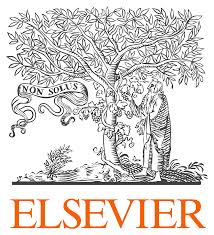Location
What is ScienceDirect
Elsevier’s leading platform of peer-reviewed scholarly literature.
University libraries and institutions offer ScienceDirect access to their communities of researchers.
Researchers, teachers, students, healthcare and information professionals use ScienceDirect to improve the way they search, discover, read, understand and share scholarly research.
Members:
Resources
Displaying 176 - 180 of 284Critical factors for crop-livestock integration beyond the farm level: A cross-analysis of worldwide case studies
Despite their recognized agricultural sustainability benefits, mixed crop-livestock farms have declined in the Northern hemisphere. As such, crop-livestock integration beyond the farm level is a promising alternative to this trend, but the knowledge of critical factors and strategies towards its successful implementation is still lacking. We developed an analytical framework to assess the critical determinants of the emergence and outcomes of integration, which helped us understand farmers’ collective strategies for reducing integration transaction costs.
Wealth and the distribution of benefits from tropical forests: Implications for REDD+
Interventions to strengthen forest conservation in tropical biomes face multiple challenges. Insecure land tenure and unequal benefit sharing within forest user groups are two of the most important. Using original household-level survey data from 130 villages in six countries, we assess how current wealth inequality relates to tenure security and benefit flows from forest use. We find that villages with higher wealth inequality report lower tenure security and more unequal flows from forest income and externally sourced income.
Triangulation in participation: Dynamic approaches for science-practice interaction in land-use decision making in rural China
Land use decision making requires knowledge integration from a wide range of stakeholders across science and practice. Many participatory methods and instruments aiming at such science-practice interaction have been developed during the last decades. However, there are methodological challenges, and little evidence neither about the methodological applicability and practicability under diverse socio-political conditions nor about their dynamics. The objective of this paper is to offer some insights on the design and implementation of reasonable science-practice interaction.
Adaptive biodiversity management of semi-natural hay meadows: The case of West-Norway
Worldwide semi-natural habitats of high biological value are in decline. Consequently, numerous Agri-Environment Schemes (AESs) intended to halt biodiversity loss within these habitats have been implemented. One approach has been the application of “adaptive management”, where scientific knowledge is applied alongside the traditional ecological knowledge (TEK) of stakeholders in order to establish an integrated approach that is adjusted as outcomes are assessed. In this paper we examine the effectiveness of the adaptive management approach of Norway’s Action Plan for Hay Meadows (APHM).
Playing by the rules? Analysing incremental urban developments
Current urban developments are often considered outdated and static, and the argument follows that they should become more adaptive. In this paper, we argue that existing urban development are already adaptive and incremental. Given this flexibility in urban development, understanding changes in the so-called ‘rules of the game’ which structure and change collective action, is increasingly relevant. Gaining such insights advances the ability of planners to deal with perceived spatial problems. The aim of this paper is twofold.


